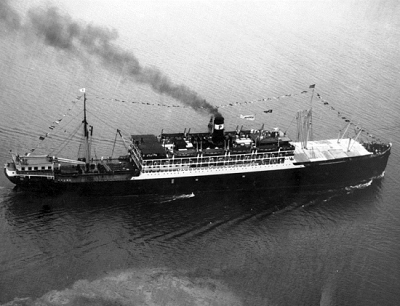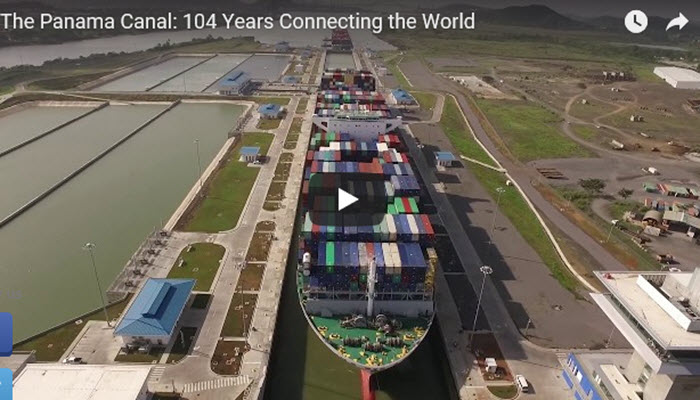Since its inauguration on August 15, 1914, the Panama Canal has revolutionized maritime traffic. More than a million ships have crossed the waterway, connecting markets from all corners of the globe. The Panama Canal connects 144 maritime routes, reaching 1,700 ports in 160 countries.

The first cargo ship to pass the canal was the U.S. ship SS Ancon. At the time, the Canal was considered one of the most important accomplishments to date in modern engineering. Since then there has been over one million transits. The millionth vessel, in 2011, was the bulk carrier Fortune Plum operated by STX Pan Ocean.
The Panama Canal Authority released a video this month celebrating 104 years, saying: “Through a series of measures going into effect at the start of the 2019 fiscal year, including the lifting of certain LNG navigation rules, our route will become even more efficient than ever before.”
Early History
The Panama Canal was the most expensive American public works project of its time in 1914 with an estimated cost of $302 million. The U.S. took over the project from France, which began it in 1881 and withdrew in 1889 due to engineering problems and high mortality rates from disease. It’s estimated that more than 22,000 people died during the French period.
While the unfinished canal sat idle, the Walker Commission under President McKinley favored a new canal in Nicaragua. But that all changed when McKinley was assassinated on September 14, 1901 and succeeded by Theodore Roosevelt.
President Roosevelt was a firm believer in the strategic vision of Admiral Alfred Thayer Mahan, who expounded in his 1890 classic, The Influence of Sea Power upon History, that supremacy at sea was essential for the nation’s commercial and military strength. He had no doubt that, by completing the canal, the U.S. would have tactical superiority over the oceans surrounding its coastlines.
The following words from Roosevelt are engraved in a plaque on display in the Rotunda of the Panama Canal’s Administration Building conveying his personal philosophy and the spirit of his thinking about the achievement of completing the Panama Canal:
“It is not the critic who counts, not the man who points out how the strong man stumbled, or where the doer of deeds could have done them better. The credit belongs to the man who is actually in the arena; whose face is marred by dust and sweat and blood; who strives valiantly, who errs and comes short again and again; who knows the great enthusiasms, the great devotions, and spends himself in a worthy cause; who, at the best, knows in the end the triumph of high achievement; and who, at the worst, if he fails, at least fails while daring greatly, so that his place shall never be with those cold and timid souls who know neither victory nor defeat.”
Roosevelt is widely given credit for building the Panama Canal even though three presidents’ terms coincided with U.S. Canal construction efforts – Roosevelt, Howard Taft and Woodrow Wilson.
About 56,000 workers were employed by the U.S. from 1904 until August 15, 1914, when the canal opened. During the 10 years of construction 5,609 workers died from accidents and disease, but the achievement of opening the 48-mile (77 kilometer) canal through the Isthmus of Panama forever changed ocean transportation by eliminating the need to sail around Cape Horn to get from one ocean to the other.
